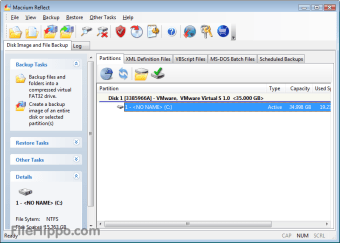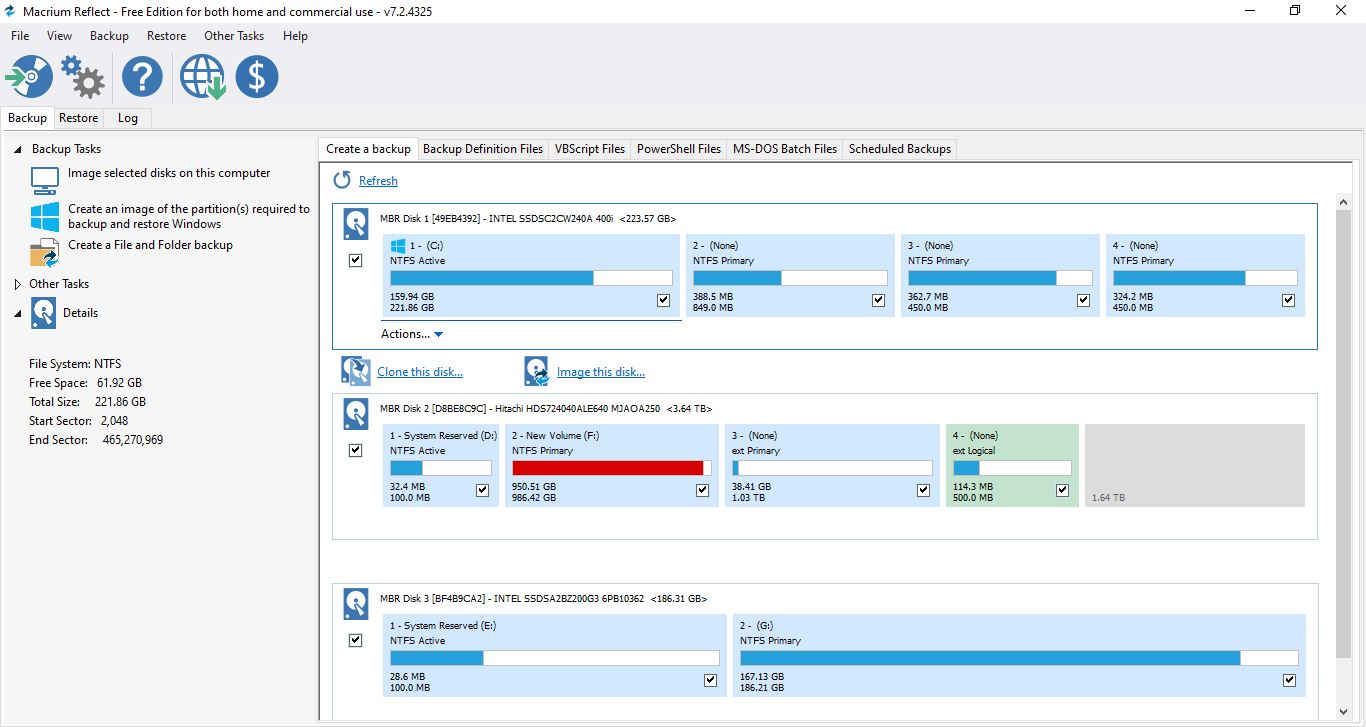

- How to use macrium reflect to image a hard drive install#
- How to use macrium reflect to image a hard drive software#
- How to use macrium reflect to image a hard drive license#
- How to use macrium reflect to image a hard drive download#
- How to use macrium reflect to image a hard drive windows#
You're warned that changes are about to be written.You can use the default file name when saving your configuration. Macrium Reflect gives you the option to save your configuration to a file that can be opened later to reload the same settings.We will not configure a schedule in this example. Scheduling a clone can be useful if you want to perform regular backups automatically. Reflect lets you schedule this clone to happen regularly.See Optional: allocate remaining space for more information. Any extra space at the end of the disk will be unallocated. The source partitions are now displayed in the destination disk, indicating that they will be cloned.In this example, we're cloning everything. You can uncheck any drive you don't want to clone. In the source disk (on top), make sure all partitions have a checkmark. With all partitions marked for deletion on our destination disk, the disk looks completely gray (see image below).If your destination disk has no partitions, you can skip this step. Note that the partitions is not deleted until the configuration is complete and the clone operation begins. To specify that they should be deleted before cloning begins, select each partition in your destination disk one at a time and click Delete Existing Partition. If the disk contains data, its partitions should be removed, clearing the slate for the cloning process. When we perform the clone, we will overwrite the entire destination disk.Then, click Select a disk to clone to.Īll eligible destination disks are shown in a drop-down list. Verify you have the correct source disk selected. Regardless, the instructions will be the same, because in this example we are cloning the entire disk. You may only have one, two or three partitions.
How to use macrium reflect to image a hard drive windows#
In this example, our source disk has several partitions: two Windows partitions (the system partition, and the recovery partition), and three Linux partitions. Beneath the selected disk, the option Clone this disk is listed.
How to use macrium reflect to image a hard drive install#
ViBoot is an optional component, not required to make a clone, so we do not install it here. You're given the option to install ViBoot.
How to use macrium reflect to image a hard drive software#
Choose which edition of Macrium Reflect Free to install, "Home" or "Commercial." If you're not using the software for a business, choose Home.
How to use macrium reflect to image a hard drive license#

How to use macrium reflect to image a hard drive download#
By default, the installer runs automatically when the download is complete.

The agent downloads the installer, which installs the software on your computer.įollow these steps to download and install Macrium Reflect Free. To install Macrium Reflect Free, first download and run the download agent. The first thing we'll do is walk through the installation. It's robust, intuitive to use, and the free version supports system disk cloning. In this article, we use the free edition of Macrium Reflect.


 0 kommentar(er)
0 kommentar(er)
